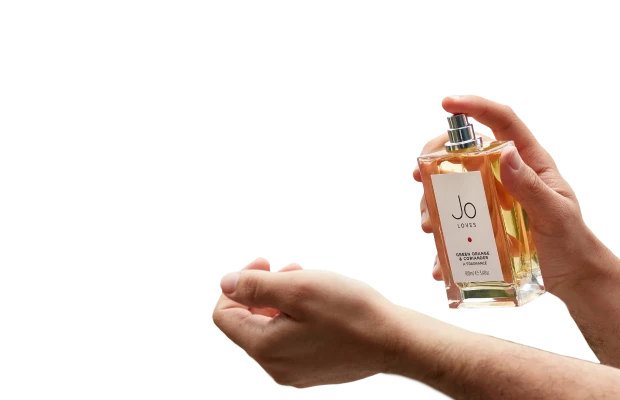
AI-powered delivery date estimates to boost conversion
Give shoppers peace of mind and protect and grow your bottom line
Personalized tracking experiences to build brand loyalty
Returns and exchanges management to mitigate fraud and reward best customers
Proactive communication to drive customer lifetime value
Delivery claim management to tackle fraud and build trust
How to Create a Luxury Shopping Experience Online
%20(36).webp)
Global sales of personal luxury goods are estimated to reach $607 billion by 2030, with 33% of those sales occurring online. According to a study by Bain and Luxe Digital, ecommerce is on track to be the single biggest sales channel in luxury the coming years, surpassing mono-brand retail stores. Affluent Gen Z and Gen Alpha customers are on track to be 30% of the luxury customer base by 2030, growing at a 3x faster rate than other generations of luxury customers.
Luxury retailers go to great lengths to make customers happy in their brick-and-mortar stores, which raises an important question in a time when ecommerce continues to grow: How can brands create a luxury experience online?
From the moment a customer encounters a luxury brand—whether in a store or online—to the moment of purchase and receipt of goods, brands must deliver a premium experience. Some luxury brands have resisted diving into digital sales because they want to maintain control over each transaction. Companies, however, are realizing that they need to evolve to meet customer expectations and match the convenience that digital-first customers have come to expect from non-premium brands that are booming online.
In this article, you’ll learn what luxury shoppers expect at each step of an ecommerce transaction, and the tools brands can use to exceed those expectations.
Translating real-life service into a digital world
When customers pay premium prices, they expect more than just luxury goods; they want an unparalleled experience. But most of the factors that would impact a customer’s impression of the brand can still be conveyed in a digital transaction.
Immersive storytelling
Luxury is not dependent on SEO. Most customers navigating to a luxury brand’s website are already familiar with the brand, and hunting for a particular item. Regardless, underscoring the history, scarcity, or craftsmanship of a marquis product is part of the luxury experience.
A sales associate in a Burberry brick and mortar location, for example, would detail the craftsmanship of the brand’s famous trench coat, explaining the water-repellant properties of the fabric, and how the pieces are stitched and finished. Similarly, the Burberry website includes fabrication details, and a notation that the brand’s gabardine trench coats are produced in Yorkshire, England. Shoppers with further inquiries are directed to contact the brand 24/7 by phone, email, or on a dedicated Twitter account.

Many of the top online luxury brands—Dior, Hermes, Rolex, Prada, Tiffany, and Goyard, to name a few—use video heroes on the home pages as part of their storytelling process, whether it’s to showcase a brand ambassador, highlight a new collection, or detail the history of the brand. For luxury retailers, the initial imagery on a website isn’t about a product—it’s about an impression.
Enhanced photography
Robust product descriptions and photography—including 360-imaging and video—can convey most of the information a customer needs to make an online purchase decision.
Dior, currently ranked as the most popular online luxury brand, showcases handbags and shoes from all the standard product angles—front, profile, 45-degree, back, top, and macro—and includes styled video of the product, plus an interactive 3D view.

While luxury brands like Chanel do not include extensive imagery of their handbags online to mitigate the risk of knock-offs, they also do not sell their handbags online. A customer making an online inquiry about a purchase is directed to a customer support phone number, where an associate will help them locate a boutique with the product.
Detailed size guides
In a brick-and-mortar store, a customer can try multiple apparel and footwear sizes to determine the best fit. Online, 63% of shoppers are bracketing. Improved sizing technology with both English and metric conversions, as well as chat and/or telephone support advice, can help minimize bracketing to ensure a smooth luxury transaction.


In its size guides, Louis Vuitton includes a table with French sizing as well as the shopper’s home country sizing, along with chest, waist, and hip measurements for each size—displayed in inches or centimeters, based on the shopper’s preference. The brand also includes a diagram and detailed instructions for taking measurements.
Delivery estimates
Luxury shoppers are a global audience—a detail retailers need to remember when detailing delivery estimates on product pages. While a retailer may be able to promise two-day delivery on domestic orders, international orders may take longer, depending on the locations of the brand’s distribution centers.
Where retailers shipping domestically often tout their shipping speed on product pages—e.g. Free two-day shipping on orders over $50—the more common standard in luxury is to convey that shipping and returns are complimentary, and offer more detailed estimates during checkout.
Package presentation
Presentation and unboxing is part of the luxury experience—even in ecommerce. In a digital sale, fulfillment workers can be tapped to execute the same level of packaging artistry, with tissue, branded boxes, and ribbon. That parcel is then placed within a shipping box for transport.
Keep in mind that the exterior box is the first physical touchpoint the luxury customer has with their purchase. Even something as basic as the shipping packaging has to convey quality to deliver the luxury shopping experience. Every element of a luxury retailer’s packaging should be deliberate, combining form and function.
Fulfillment and shipping communication
Shipping is the least stable variable in luxury ecommerce. Brands can’t control weather delays, courier uniforms, or delivery presentation, so they have to approach shipping communications as their final opportunity to delight the customer before unboxing.
The good news is that it’s easy to communicate with customers in a tone that builds upon a luxury brand’s reputation for service. Luxury shoppers are more concerned about their order status than non-luxury shoppers: They experience a 66% higher engagement rate on item shipment tracking pages than non-luxury brands, and luxury customers check their order tracking pages an average of five times.
As a best practice, luxury brands should be updating shoppers through their preferred communication channel—SMS or email—and offering customers a dedicated tracking page for the order.
Post-purchase confirmation
Beyond listing the items a customer purchased and their prices, the order confirmation should set expectations for the rest of the fulfillment process, including processing time, buy online pick-up in store (BOPIS) instructions (when relevant), an estimated delivery date (when available), relevant cancellation procedures, final sale status, and return instructions.
If there’s a variance in the standard fulfillment process at the time of purchase—like pre-orders, backorders, or delays—it should be communicated prior to purchase and then emphasized in the order confirmation. Luxury customers are accustomed to pre-season orders, so waiting is not necessarily a deal breaker.
Shipping notification
Brands should send a shipment notification once an order has been sent to the carrier. The shipping notification should include the name of the shipping company, the shipping identification number, (preferably hyperlinked to reduce effort on the customer side), and the estimated delivery date.
Narvar research shows that personalized shipping notification emails—those with the order number in the subject line—have 8% higher open rates.
Next-day or same-day delivery alert
Some customers need to make plans to receive a high-value delivery, so it’s helpful to send a reminder that a package will arrive either the next day or later the same day. Reminders give the customer a chance to adjust their schedule, reschedule a delivery, or enlist a third party to take a box inside.
In 2022, 79% of Americans reported having a package stolen by “porch pirates.” Incoming package reminders can be the difference between a seamless delivery and an angry customer service call or costly replacement.
Branded tracking pages

The easiest way for a customer to track their order is through a branded tracking page, which serves as the customer’s post-purchase control center. Though a retailer should still send the customer an update at each phase of the fulfillment process, the branded tracking page should have the latest information, accessible from any of the retailer’s messages about the transaction.
Narvar’s branded modules are built to be designed once, and deployed everywhere. That means the customer gets the same information and experience, whether they access updates through email, text notification, or directly through the brand’s website.
Luxury shopping deserves luxury returns
In-store and by-mail account for nearly three out of every four returns made by shoppers, customer preferences shift when it comes to return methods for high value items:
- 39% prefer to return in store
- 26% prefer home-pickup
- 24% prefer to return by mail.
Approximately 25% of customers are willing to pay for returns—with the top requested service being home pick-up. Offering luxury customers a home pick-up option is not only a smart way of increasing the retailer’s net promoter score, it also helps the retailer return the item into inventory faster.
The convenience of third-party drop-off has also grown over the last four years, with 37% of all shoppers saying they returned their most recent ecommerce purchase by dropping it off at a third-party location like the UPS Store.
Customer care follow-ups
Brands that offer additional services and advice for maintaining their products should communicate that information to the customer in the delivery confirmation message and follow-up throughout the lifecycle of the product. For example:
- Neiman Marcus stopped selling fur products in 2023, but continues to offer fur maintenance and storage for clients. A customer may have forgotten about those services, so it would be wise to send a follow-up reminder at the start of spring.
- Christian Louboutin includes extra taps and dust bags with each shoe purchase, but also offers them through customer service should a customer need more. The brand does not offer shoe repair, but maintains a list of vetted shoe repair services for products that need a refresh.
- Brunello Cucinelli offers complimentary repairs on its products. Customers simply have to reach out to request a repair.
Proactively drawing a luxury customer’s attention to these types of services is a way of demonstrating the value of luxury.
Final thoughts
Narvar’s platform creates a branded post-purchase experience that fulfills the promise of exclusivity and premium service. Moreover, it provides for an extra level of communication, based on the retailer’s and/or customer’s preferences. By providing early information like a shipping notification, the projected delivery date, and delays, Narvar helps brands build trust with their customers.
The world’s top luxury retailers use Narvar as their partner in luxury ecommerce. Schedule a demo today, and discover what Narvar can do for your brand.
Get more insights from the experts
GET STARTED
Power every moment after the buy
Build trust. Protect margins. Drive growth — “Beyond Buy.”





















